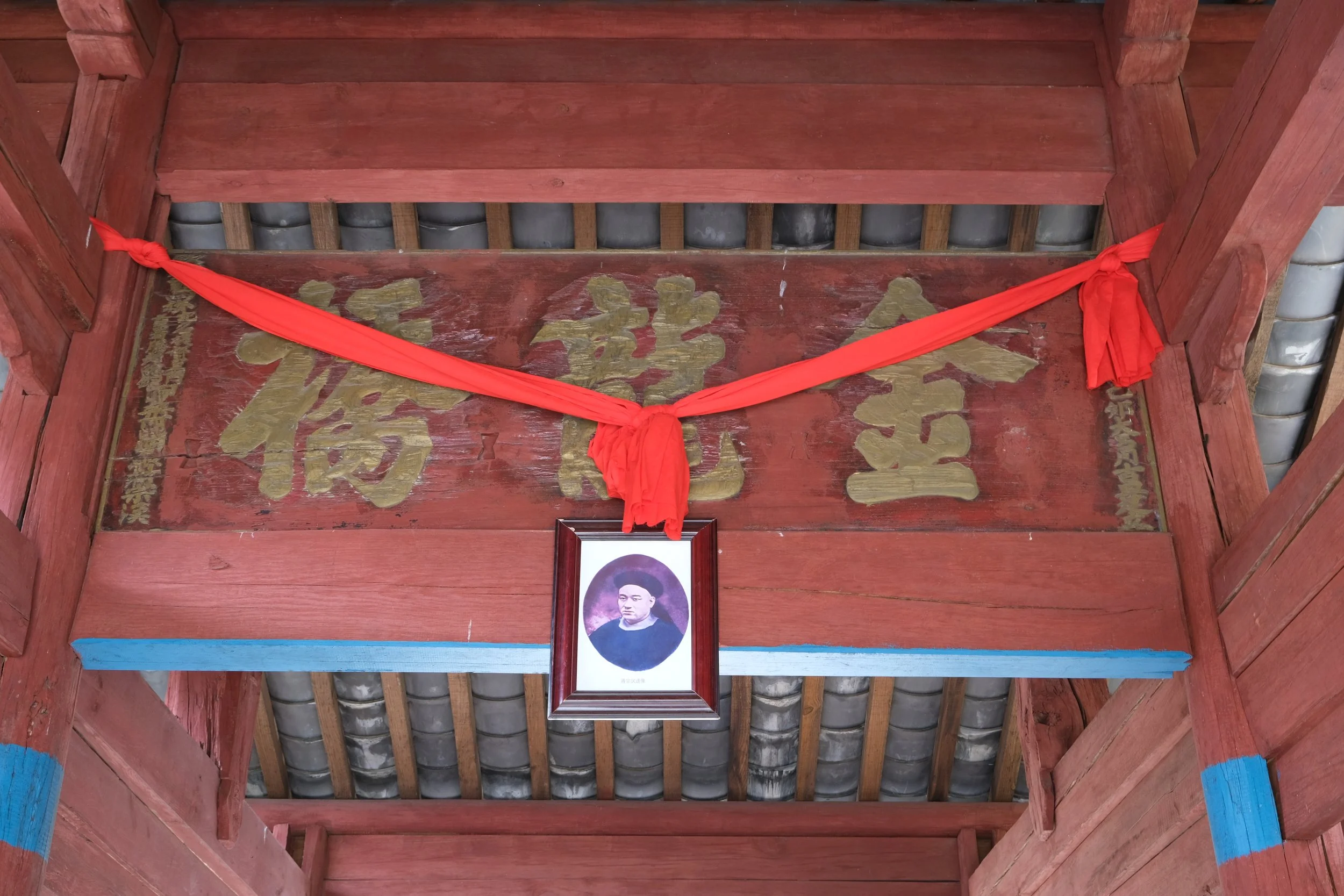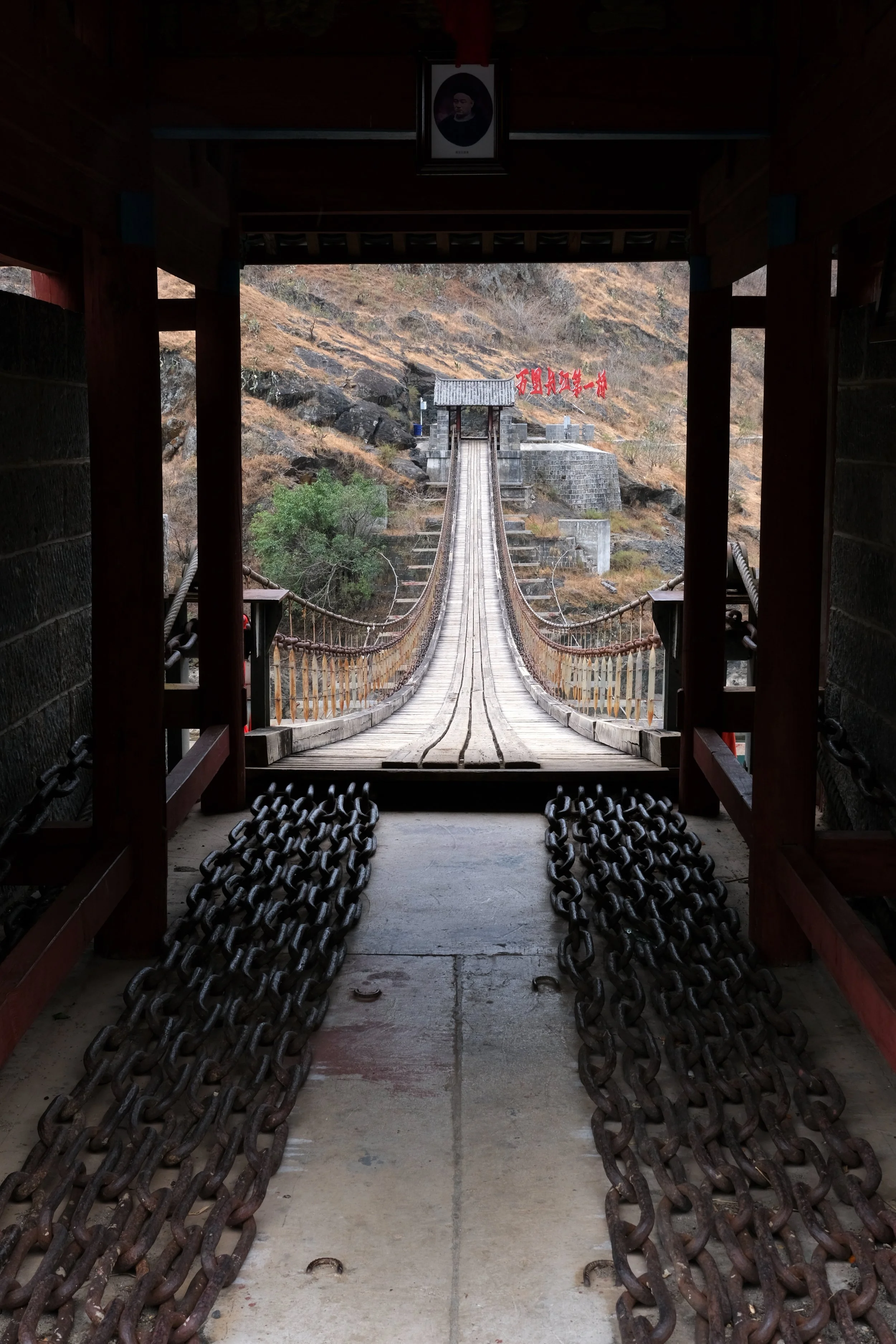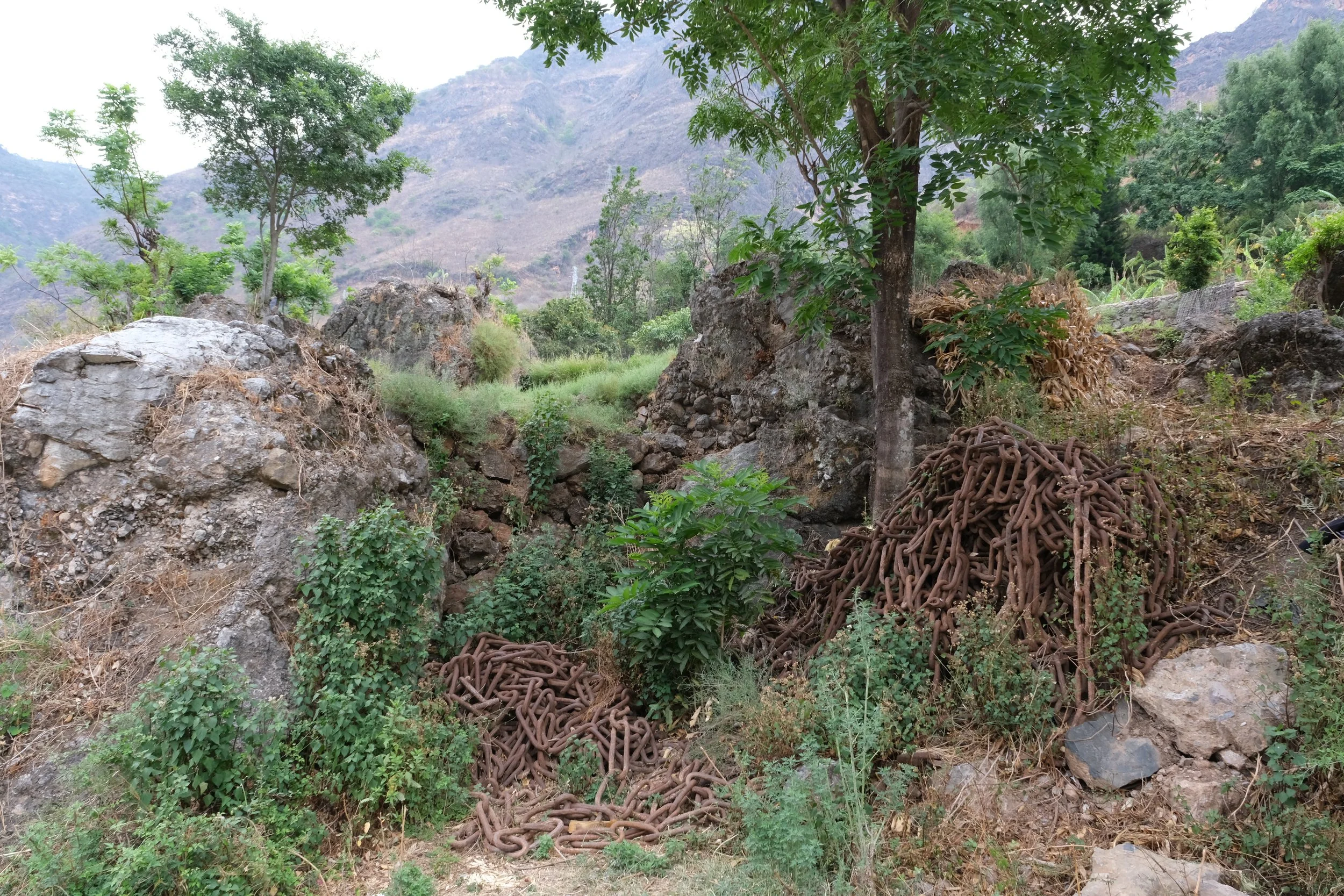The Lijiang Poltergeist
Jiang Zonghan’s bridge over the Yangzi at Ziling village. The cause of hauntings…
In 2024 I visited China’s Yunnan province to research a story about the oldest surviving bridge over the Yangzi river. This chain-link suspension affair was built back in 1886 some way southeast of Lijiang – former capital of the semi-independent Naxi kingdom and now a tourist black hole of picturesque cobbled lanes, streams and timber houses.
The bridge was funded by Jiang Zonghan, a battle-hardened veteran of Yunnan’s Muslim Uprising and France’s annexation of northern Vietnam, who rose from virtual slavery in a mountain village outside Lijiang to become the military governor of Guizhou province. There are a few versions of why he had the bridge built. One folktale tells of how, as a young man, Jiang eloped with his master’s daughter. Pursued to the banks of the Yangzi, a ferryman refused to carry him over and Jiang had to swim across; he later built the bridge to put the ferryman out of business.
A less romantic story, backed up by announcements in the imperial mouthpiece, the Peking Gazette, states that the bridge was a memorial to his parents. It’s also true that by building it Jiang – who aside from his military career founded a trading house – improved transport along what at the time was an important route into adjoining Sichuan province. You can read my full South China Morning Post article here, or listen to it here on Laszlo Montgomery’s peerless China History Podcast.
Board reading “Golden Dragon Bridge” and a photo of Jiang Zonghan
Recently, I reread Forgotten Kingdom by Peter Goullart, a refugee Russian who settled in Lijiang through the 1940s and helped to set up small-scale cooperatives. In it I came across a completely unexpected episode: it seems that in 1937 Jiang Zonghan’s bridge was the cause of a strange series of supernatural events in Lijiang. Goullart arrived after they had ended but was told the story by local friends.
Apparently the family involved, named Lai, first noticed small objects inexplicably being playfully moved around their house. They consulted a medium, who told them that two female spirits wanted them to repair
“the famous iron chain bridge over the Yangtze at Tzelichiang [Zili], some eighty li from Likiang on the busy Likiang–Yunpai caravan route. This hanging bridge, about 150 feet long, had been built long ago by a pair of lovers, who had escaped the fury of pursuing parents, and who, with great difficulty and only just in time, had crossed the raging river by boat to safety. In gratitude for their almost miraculous escape from two mortal dangers and in fulfilment of a vow they built the bridge. With the passage of time the eighteen chains, anchored to the huge boulders on either side of the gorge, where deep down the great river boiled, became loosened and worn out and liable to break at any time.”
The Lais protested that they didn’t have the funds to undertake repairs, but the spirits said not to worry, they would take care of things. The family suddenly began to prosper and within a short time became the wealthiest merchants in Lijiang. Then one day the spirits decided that enough funds had been secured and demanded that repairs begin immediately. The Lais, however, claimed that they were still too poor. Instantly the playful poltergeists became vengeful demons. Fires broke out in the house every night and stones rained down through the roof, smashing furniture and crockery. Local exorcists and even a Christian missionary tried and failed to evict the angry spirits.
Bridgehead with support chains
British sinologist CP Fitzgerald, based at the nearby city of Dali during the late 1930s, was actually in Lijiang during the hauntings:
“The manifestations continued for more than eight months, and when I visited the house late in 1937 it was virtually ruinous. Much of the woodwork was burned or charred, even under the eaves and high up on the walls, where the fire can only have been applied by a torch. The doors and window lattices were smashed and scarred by stones, and these lay in heaps in the courtyard. It was said that one fire had broken out the previous night, and we were shown the spot, under the roof ridge, which was indeed charred and still smoking slightly ... When a Chinese colonel, second-in-command to the Li Chiang garrison, visited the house, and with drawn pistol boastfully defied the ghost, he was struck on the back of the head by a stone and rendered unconscious. I was told that he was surrounded by his bodyguard at the time.”
Eventually the Lais had no choice but to repair the bridge. According to Fitzgerald the hauntings immediately stopped, but Goullart maintained that they continued until the family wholeheartedly apologised for their meanness. They built a small shrine by the bridge to house the spirits, and paid a priest to keep it stocked with offerings of wine and food. But the Lai’s house was so damaged it had to be pulled down.
Fitzgerald concluded that locals
“were much divided in their opinions about the outcome of the Li Chiang hauntings. Some laughingly suggested that it had all been a clever plan on the part of those who wanted the bridge repaired. Others argued that such a secret could never be kept in the middle of a city, and that the effects produced in a house guarded day and night were far beyond the reach of human skill. Anyone as clever as that they said, could have made a fortune as a thief, and would not need to engage in practical jokes of a dangerous kind for no reward. It was, however, agreed that no one hitherto had heard of a poltergeist who worked in such a disinterested way for the public good.”
Discarded chains from an earlier incarnation in vegetation near the bridge
After WWII ended civil war broke out as China’s Nationalist government and Mao Zedong’s Communists fought for control of the country. Yunnan province, distant from central authority and barely policed, became prey to bandit armies. A local strongman gathered a large force and marched on Lijiang. Tibetan and Naxi fighters grouped to defend the town, demolishing Jiang Zonghan’s bridge to slow the bandits’ advance:
“The first step was to remove the flooring and then dismantle the chains... they were detached from the boulders to which they had been anchored on the other side of the river and they clanged heavily as they dropped into the turbulent stream.”
The bridge was eventually repaired, but the former caravan route dropped out of favour and today, bypassed by expressways, it crosses the river to nowhere.
Sources
Fitzgerald, Charles Patrick The Tower of Five Glories (Cresset Press 1941)
Goullart, Peter Forgotten Kingdom (John Murray 1955)
North China Herald 1875–1888
Yang Kai Tea House, Tea People, Tea Matters: The Pu’er Tea Story Collection (茶庄茶人茶事:普洱茶故事集; Morning Light Press, 2017). Article on Jiang Zonghan reprinted at https://m.ipucha.com/show-25-10964.html
Zhao Erxun A Draft History of the Qing Dynasty (清史稿; Republic of China National History Museum, 1929). Jiang Zonghan’s biography online at: https://zh.wikisource.org/wiki/清史稿/卷459



